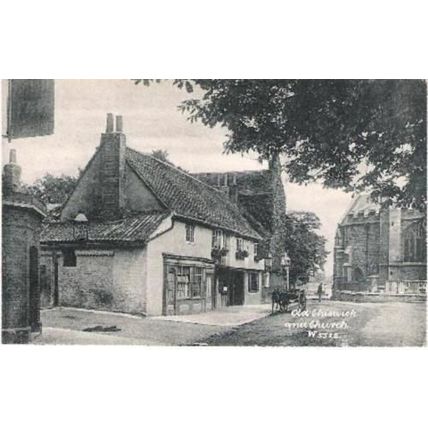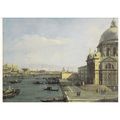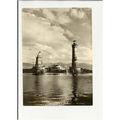London - Old Chiswick & Church - postcard c.1910s
- Condition : Used
- Dispatch : 2 Days
- Brand : None
- ID# : 195917140
- Quantity : 1 item
- Views : 56
- Location : United Kingdom

- Seller : justthebook (+1712)
- Barcode : None
- Start : Fri 02 Oct 2020 06:21:40 (EDT)
- Close : Run Until Sold
- Remain : Run Until Sold
Checks/Cheques
 for 1 item(s) edit
for 1 item(s) edit
Shipping Calculator
More Listings from This Seller view all
Seller's Description
- Postcard
- Picture / Image: 'Old Chiswick and Church' [modern London Borough of Hounslow]
- Publisher: none stated - dates from around 1910-1920
- Postally used: no
- Stamp: n/a
- Postmark(s): n/a
- Sent to: n/a
- Notes / condition:
- Postcard
Please ask if you need any other information and I will do the best I can to answer.
Image may be low res for illustrative purposes - if you need a higher definition image then please contact me and I may be able to send one. No cards have been trimmed (unless stated).
------------------------------------------------
Postage & Packing:
Postage and packing charge should be showing for your location (contact if not sure).
No additional charges for more than one postcard. You can buy as many postcards from me as you like and you will just pay the fee above once. Please wait for combined invoice. (If buying postcards with other things such as books, please contact or wait for invoice before paying).
Payment Methods:
UK - PayPal, Cheque (from UK bank) or postal order
Outside UK: PayPal ONLY (unless otherwise stated) please. NO non-UK currency checks or money orders (sorry).
NOTE: All postcards are sent in brand new stiffened envelopes which I have bought for the task. These are specially made to protect postcards and you may be able to re-use them. In addition there are other costs to sending so the above charge is not just for the stamp!
I will give a full refund if you are not fully satisfied with the postcard.
----------------------------------------------
Text from the free encyclopedia WIKIPEDIA may appear below to give a little background information (internal links may not work) :
*************
Chiswick (i/'t??z?k/) is a district of west London, England, and part of the London Borough of Hounslow.[3] It contains Hogarth's House, the former residence of the 18th-century English artist William Hogarth; Chiswick House, a neo-Palladian villa regarded as one of the finest in England; and Fuller's Brewery, London's largest and oldest brewery. It occupies a meander of the River Thames which is heavily used for competitive and recreational rowing, and Chiswick itself is home to several clubs. The finishing post for the Boat Race is just downstream of Chiswick Bridge.
The area was historically an ancient parish in the county of Middlesex, with an agrarian and fishing economy. Having good communications with London from an early time Chiswick became a popular country retreat, and as part of the suburban growth of London in the late 19th and early 20th centuries the population significantly expanded. It became the Municipal Borough of Brentford and Chiswick in 1932 and formed part of Greater London since 1965, when it was merged into the London Borough of Hounslow. Chiswick has a number of named sublocalities: Bedford Park, Grove Park, the Glebe Estate, Strand-on-the-Green and those with named tube stations Turnham Green, and Gunnersbury all within its three full-sized wards of the United Kingdom.
Other parts of the W4 postcode area, including Chiswick Park tube station, Acton Green, and much of Bedford Park are in the London Borough of Ealing.
On a border, the Great West Road Roundabout is the start of the North Circular Road (A406), South Circular Road (A205) with the eponymous road flying over this. Within Chiswick at the Hogarth Roundabout the M4 converts to a non-motorway highway, providing a second mode of transport connection to Heathrow Airport and the M4 corridor or all northern/due west counties of the United Kingdom. The Great West Road runs eastwards to end in central London. In Chiswick starts the Great Chertsey Road (A316) which runs south-west, a road that becomes the M3 motorway.
Historic figures who lived in Chiswick include the poet Alexander Pope, the Italian revolutionary Ugo Foscolo, the Impressionist painter Camille Pissarro and the novelist E. M. Forster.
Chiswick was first recorded c.1000 as Ceswican; the name ""Chiswick"" is of Old English origin meaning ""Cheese Farm"" and originates from the riverside meadows and farms that are thought to have supported an annual cheese fair on Dukes Meadows up until the 18th century.[4][5]
Chiswick grew up as a village around St. Nicholas Church from c. 1181 on Church Street, its inhabitants practising farming, fishing and other riverside trades including a ferry, important as there were no bridges between London Bridge and Kingston throughout the Middle Ages.[6] The area included three other small settlements, the fishing village of Strand-on-the-Green, Little Sutton and Turnham Green on the West road out of London.[6]
A decisive skirmish took place on Turnham Green early in the English Civil War. In November 1642, royalist forces under Prince Rupert, marching from Oxford to retake London, were halted by a larger parliamentarian force under the Earl of Essex. The royalists retreated and never again threatened the capital.[7]
In 1864, John Isaac Thornycroft, founder of the John I. Thornycroft & Company shipbuilding company, established a yard at Church Wharf at the west end of Chiswick Mall.[8][9] The shipyard built the first naval destroyer, HMS Daring of the Daring class, in 1893.[10] To cater for the increasing size of warships, Thornycroft moved its shipyard to Southampton in 1909.[11]
In 1822, the Royal Horticultural Society leased 33 acres (13.4 ha) of land in the area between the now Sutton Court Road and Duke’s Avenue.[12] This site was used for its fruit tree collection and its first school of horticulture, and housed its first flower shows. The area was reduced to 10 acres (4.0 ha) in the 1870s, and the lease was terminated when the Society’s garden at Wisley, Surrey, was set up in 1904. Some of the original pear trees still grow in the gardens of houses built on the site.
The population of Chiswick grew almost tenfold during the 19th century, reaching 29,809 in 1901,[13] and the area is a mixture of Georgian, Victorian and Edwardian housing. Suburban building began in Gunnersbury in the 1860s and in Bedford Park, on the borders of Chiswick and Acton, in 1875.
During the Second World War, Chiswick suffered a number of bombing raids.[14] Both incendiary and high explosive bombs were used, and there was also damage from falling anti-aircraft shells that had not exploded as intended. The first V-2 rocket to hit London fell on Chiswick on 8 September 1944, killing three people, injuring 22 others and causing extensive damage to surrounding trees and buildings. Six houses were demolished by the rocket and many more suffered damage.[15] There is a memorial where the rocket fell on Staveley Road. There is also a War Memorial at the east end of Turnham Green.
Refuge was founded in 1971 by Erin Pizzey as Chiswick Women's Aid. She opened in Chiswick the world’s first refuge for women and children escaping domestic violence.[16][17] In 1979 the organisation became a registered charity,[18][19] changing its name to Refuge in 1993, reflecting its growing national status.[20]
Listing Information
| Listing Type | Gallery Listing |
| Listing ID# | 195917140 |
| Start Time | Fri 02 Oct 2020 06:21:40 (EDT) |
| Close Time | Run Until Sold |
| Starting Bid | Fixed Price (no bidding) |
| Item Condition | Used |
| Bids | 0 |
| Views | 56 |
| Dispatch Time | 2 Days |
| Quantity | 1 |
| Location | United Kingdom |
| Auto Extend | No |







![ITALIEN ITALY [1950] MiNr 0825 ( O/used )](https://pic.ebid.net/upload_small/6/5/0/1546853591-26362-0.jpg)






